This article was co-authored by Laura Flinn. Laura Flinn is a National Academy of Sports Medicine (NASM) Certified Personal Trainer, USA Olympic Weightlifting Sports Performance Coach and Certified Fitness Nutritionist, with an additional qualification as a TRX Suspension Trainer. Laura runs her own personal training program based in the San Francisco Bay Area and specializes in topics such as weight loss, muscle growth, cardiovascular training, and strength training.
This article has been viewed 41,838 times.
Achilles tendonitis is a problem that can cause a large amount of pain at the back of the ankle and the heel of the foot. Stretching the area can be a big help in reducing this pain. When stretching for Achilles tendonitis, stretching the tendon itself and the calf muscles is important. With a combination of these types of stretches, and lifestyle changes, you can eliminate most Achilles tendonitis pain.
Steps
Using Heel Drops to Stretch the Achilles Tendon
-
1Do heel drops with straight legs. Stand on the edge of a step. Position yourself so that the balls of your feet are on the edge of the step and your heels are floating in air but parallel to your toes. Keeping your legs straight, but without your knees being locked, flex your ankle and feet slowly so your whole body lifts up.
- Once you get as high as you can, bring your body back down, so that your feet return to their horizontal starting position.
- Do this stretch for 3 sets of 15 repetitions daily.
- This movement should be slow and controlled. You get a much better stretch that way and you minimize the risk of increasing the injury to your Achilles tendon.
- You can use a short step, like those used for step aerobics class, or a normal step in your home.
-
2Drop your heels with bent knees. In order to stretch your Achilles and calves in a slightly different way, repeat the heel drop but bend your knees slightly while you do it. Bend your knees before you start raising your body up.
- Doing these stretches daily will strengthen the tendon, making it able to better withstand the stresses that are put on it when you do daily or athletic activities.
Advertisement -
3Try single leg heel drops. Once you have done the double leg heel drops and you feel that your Achilles tendon is getting stronger, you can begin to do heel drops that put your whole body weight on just one leg. Do the straight leg and bent knee leg drops as you did before, just balance on one leg as you lower your body back down, with the other one slightly lifted off the step.[1]
- It is a good idea to have a wall or railing to balance on when doing these drops. It takes more effort to balance on only one foot as you move your body down for this stretch.
- Do this stretch daily to increase the strength of your Achilles tendon/
Stretching the Calf to Help With Achilles Tendonitis
-
1Stretch your calves first thing every morning. When doing stretches to help your Achilles tendonitis, it's a good idea to do them every morning. Stretching the calves then will help prepare your Achilles tendon for weight bearing throughout the day.[2]
- Try doing the stretches right when you get up out of bed, as the achilles tendon has likely been contracted all night and will need some care when being extended once again.
-
2Do a standing calf stretch. Stand up and put your hands against a wall. Move one foot in front of the other so that they are about hip distance apart. Place your front foot close to, but not touching, the wall. Bend your front knee slightly while keeping your back leg straight. This should stretch the calf of the straight leg effectively.[3]
- Be sure to repeat this stretch with your legs in the opposite position so both calves get stretched.
-
3Stretch your soleus. Stand up and put your hands against a wall. Put one foot in front of the other, about hip distance apart. The toes of your front foot should be close to the wall but not touching it. Then bend both knees, moving your whole body into a slight crouching position. Your back should be close to straight while you do this stretch.[4]
- Hold this stretch for a few seconds and then release it.
- Repeat the stretch with the other foot forward.
-
4Do a foot flex stretch. Stand up and put one of your feet on a step that is a few inches tall. Position the ball of your foot on the edge of the stair so that your heel is hanging off the step. Bend your foot at the ankle so that the Achilles is stretched out and the heel is lowered slightly.[5]
- If you don't have a step you can use, you can put your toes up on a wall and lean towards is slightly, stretching out the calf and the Achilles.
- Don't lock your knee while doing this stretch. Keep it just slightly flexed, so that you don't overextend your knee.
Caring For Achilles Tendonitis in Other Ways
-
1Minimize the use of your Achilles tendon. If you are actively in pain from Achilles tendonitis, then you should allow the area to rest.[6] Don't do energetic activities that put pressure on the area and keep pressure off the tendon altogether whenever possible.[7]
- If you do need to put pressure on your Achilles tendon, be sure to do gentle stretches first.
-
2Wear shoes with cushioning and arch support. When treating Achilles tendonitis, you need to reduce the impact on the connection between the Achilles and the heel. Having supportive cushioning will go a long way toward reducing this pressure.[8]
- If you are not sure what shoes to wear, consult with a podiatrist or foot specialist in order to get recommendations.
- In most cases, it's good to avoid high heeled shoes because they do not give enough support and cushioning. They also allow the Achilles tendon to remain unstretched when you wear them.
-
3Strengthen your calf muscles.[9] In addition stretching the calves, making them stronger can help your Achilles deal with pressure that you put on it every day. While these should be done cautiously and slowly if you have an Achilles injury, some exercises that can help strengthen your calves include:[10]
Expert Q&A
-
QuestionIs stretching good for Achilles tendonitis?
 Laura FlinnLaura Flinn is a National Academy of Sports Medicine (NASM) Certified Personal Trainer, USA Olympic Weightlifting Sports Performance Coach and Certified Fitness Nutritionist, with an additional qualification as a TRX Suspension Trainer. Laura runs her own personal training program based in the San Francisco Bay Area and specializes in topics such as weight loss, muscle growth, cardiovascular training, and strength training.
Laura FlinnLaura Flinn is a National Academy of Sports Medicine (NASM) Certified Personal Trainer, USA Olympic Weightlifting Sports Performance Coach and Certified Fitness Nutritionist, with an additional qualification as a TRX Suspension Trainer. Laura runs her own personal training program based in the San Francisco Bay Area and specializes in topics such as weight loss, muscle growth, cardiovascular training, and strength training.
NASM Certified Personal Trainer It can be, but only do gentle stretches so you don't overexert yourself or cause more damage.
It can be, but only do gentle stretches so you don't overexert yourself or cause more damage. -
QuestionWhat should I do for a longitudinal mid-substance split near the myotendinous junction?
 Richard RootCommunity AnswerLongitudinal stretch against a wall. This takes the ligament out of its attachments and activates the neurons to allow muscle fibers to stretch.
Richard RootCommunity AnswerLongitudinal stretch against a wall. This takes the ligament out of its attachments and activates the neurons to allow muscle fibers to stretch. -
QuestionI have a painful bump on my Achilles!
 Community AnswerTry visiting your doctor to see what they have to say. They might classify it as tendonitis or it might be something else. Try not to do the things that aggravate it the most and give it time to heal, but you are best seeing a doctor or at least a nurse.
Community AnswerTry visiting your doctor to see what they have to say. They might classify it as tendonitis or it might be something else. Try not to do the things that aggravate it the most and give it time to heal, but you are best seeing a doctor or at least a nurse.
References
- ↑ http://www.sportsinjuryclinic.net/sport-injuries/ankle-achilles-shin-pain/achilles-tendonitis/strengthening-exercises-achilles-tendinitis
- ↑ http://www.sportsinjuryclinic.net/sport-injuries/ankle-achilles-shin-pain/achilles-tendonitis/strengthening-exercises-achilles-tendinitis
- ↑ https://orthoinfo.aaos.org/en/diseases--conditions/achilles-tendinitis/
- ↑ http://www.sportsinjuryclinic.net/sport-injuries/ankle-achilles-shin-pain/achilles-tendonitis/strengthening-exercises-achilles-tendinitis
- ↑ http://www.sportsinjuryclinic.net/sport-injuries/ankle-achilles-shin-pain/achilles-tendonitis/strengthening-exercises-achilles-tendinitis
- ↑ Laura Flinn. NASM Certified Personal Trainer. Expert Interview. 18 November 2019.
- ↑ https://orthoinfo.aaos.org/en/diseases--conditions/achilles-tendinitis/
- ↑ https://my.clevelandclinic.org/health/diseases/21553-achilles-tendinitis
- ↑ Laura Flinn. NASM Certified Personal Trainer. Expert Interview. 18 November 2019.
About This Article
Achilles Tendonitis can be painful, but stretching your tendons and calf muscles daily can help to reduce your pain and make you more comfortable. Heel drops are one great stretch. Start by standing on the edge of a step so the balls of your feet hang off the back. While keeping your legs slightly bent, slowly push up onto your toes as high as you can go, then lower yourself back down. Do 15 repetitions 3 times a day. Another great stretch is the standing calf stretch. Just place your hands against a wall and stand with one foot near the wall and the other a couple of feet behind it. Bend your front knee slightly while keeping your back leg straight and hold the position for a few seconds. Then, repeat with your other leg. Do this stretch every morning, just after you get up. For more tips from our Personal Training co-author, including how to choose shoes for your damaged achilles, read on!
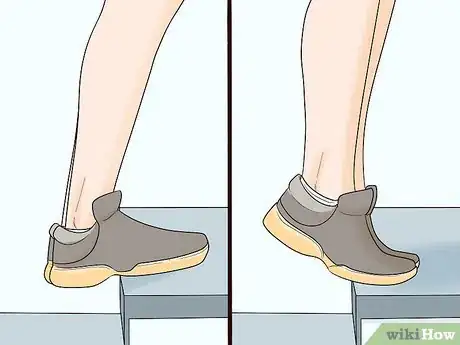

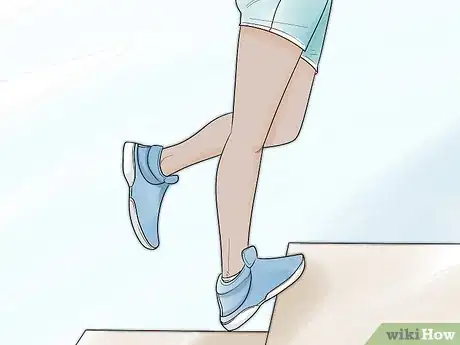



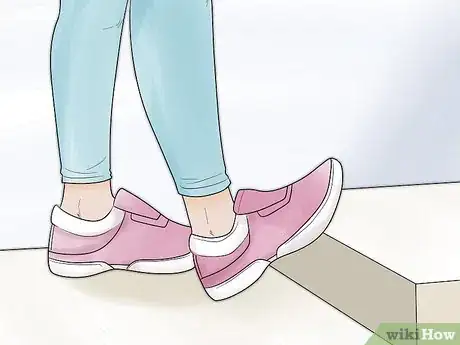


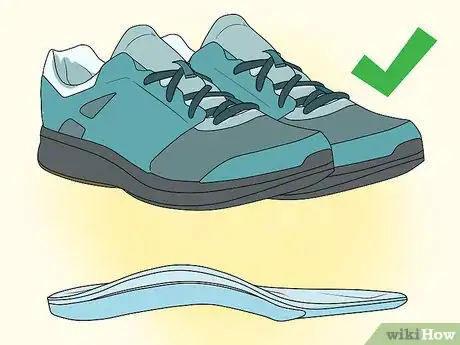
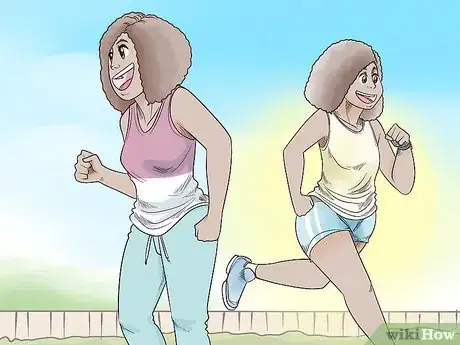

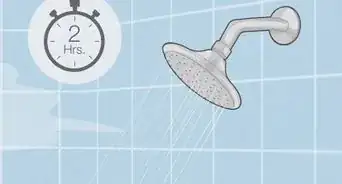
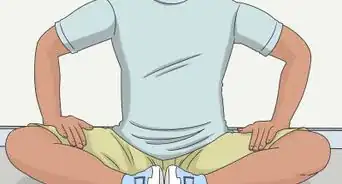
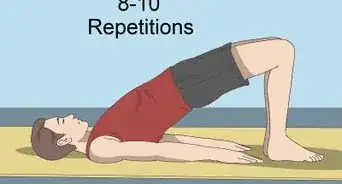
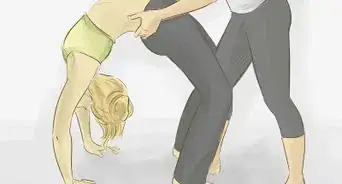
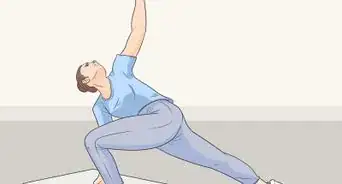
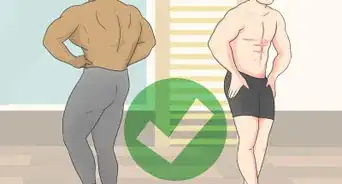


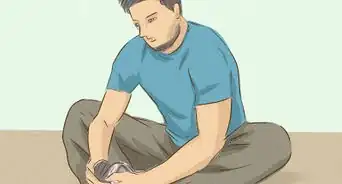







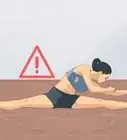

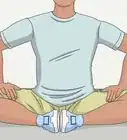



































Medical Disclaimer
The content of this article is not intended to be a substitute for professional medical advice, examination, diagnosis, or treatment. You should always contact your doctor or other qualified healthcare professional before starting, changing, or stopping any kind of health treatment.
Read More...